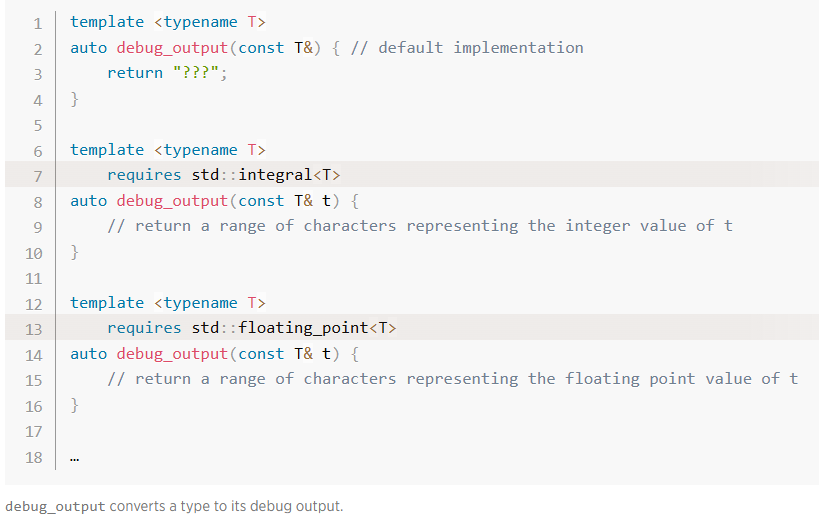if constexpr requires requires { requires } -- Jonathan Müller
 Probably the two most useful features added to C++20 are
Probably the two most useful features added to C++20 are requires and requires. They make it so much easier to control overload resolution, and when combined with if constexpr in C++17, they allow basic reflection-based optimizations in templates. While requires requires has gotten a lot of (negative?!) press for controlling overload resolution, its cousin requires { requires } is a bit overlooked.
if constexpr requires requires { requires }
by Jonathan Müller
From the article:
C++20 added requires, a way to enable or disable a function overload based on some compile-time condition. For example, consider a facility for producing debug output of types for error reporting:
The two overloads with the
requiresclause are only enabled for integers or floating point types, respectively, and are not considered otherwise. Additionally, overload resolution is smart: It knows that we want the overload with the most specific requirements, and it will only pick the first function when no other overload matches. This is also whereconceptcomes in: Aconceptis simply a way to name a group of requirements that affects the search for more specific requirements. The technical term for that is subsumption. Because creating named requirements withconceptalso comes with additional syntax sugar, you don't needrequires—so this blog post is gonna ignoreconcept. In general, if you would use aconceptin only one place, it is too early to introduce it.


 One of the reasons that I’m excited for Reflection in C++ is that it can permit you to implement, as a library, many things that previously required language features. In this post, I’m going to walk through implementing P2786R8 (“Trivial Relocatability For C++26”).
One of the reasons that I’m excited for Reflection in C++ is that it can permit you to implement, as a library, many things that previously required language features. In this post, I’m going to walk through implementing P2786R8 (“Trivial Relocatability For C++26”). How do you minimise locking between producers and consumers? Lucian Radu Teodorescu describes a common, but currently undocumented, design pattern. Design patterns can help us reason about code. They are like algorithms that are vaguely defined in the code. Once we recognise a pattern, we can easily draw conclusions about the behaviour of the code without looking at all the parts. Patterns also help us when designing software; they are known solutions to common problems.
How do you minimise locking between producers and consumers? Lucian Radu Teodorescu describes a common, but currently undocumented, design pattern. Design patterns can help us reason about code. They are like algorithms that are vaguely defined in the code. Once we recognise a pattern, we can easily draw conclusions about the behaviour of the code without looking at all the parts. Patterns also help us when designing software; they are known solutions to common problems. A post I wrote back in 2023
A post I wrote back in 2023